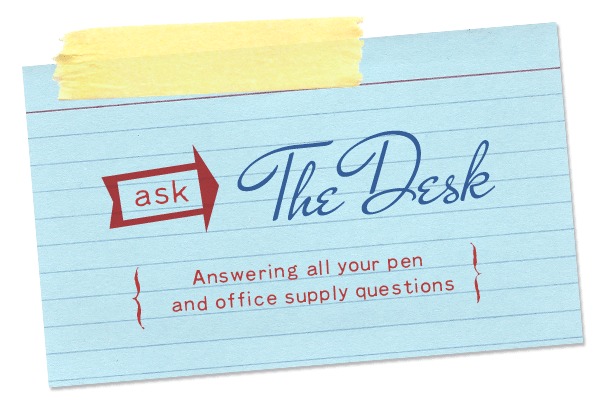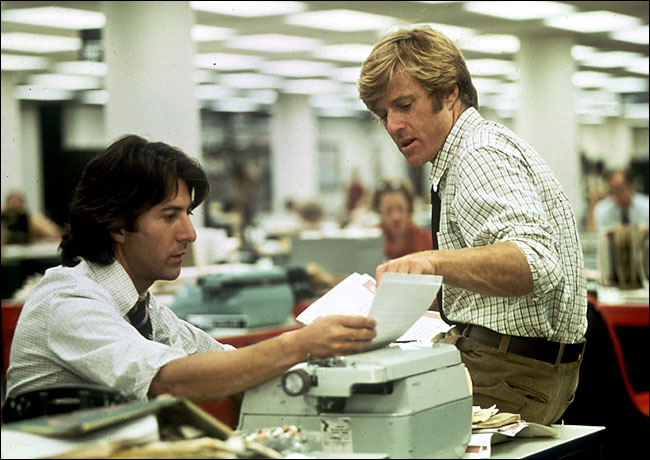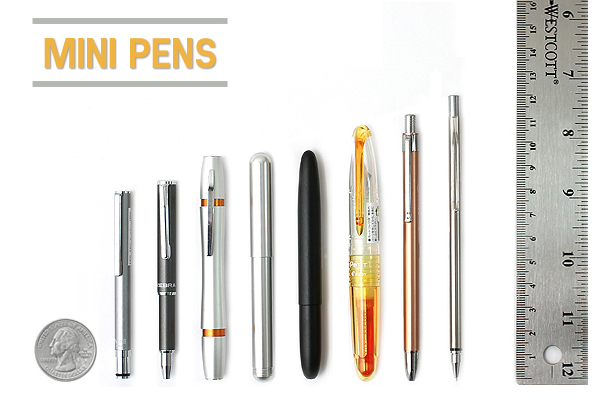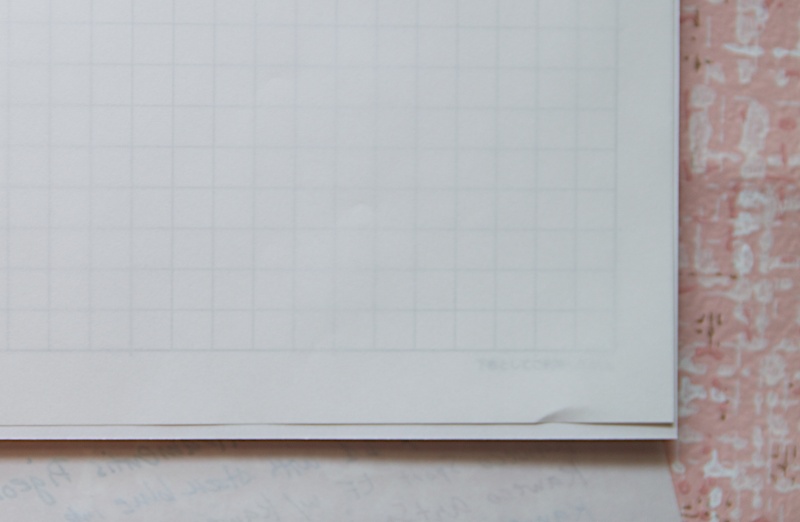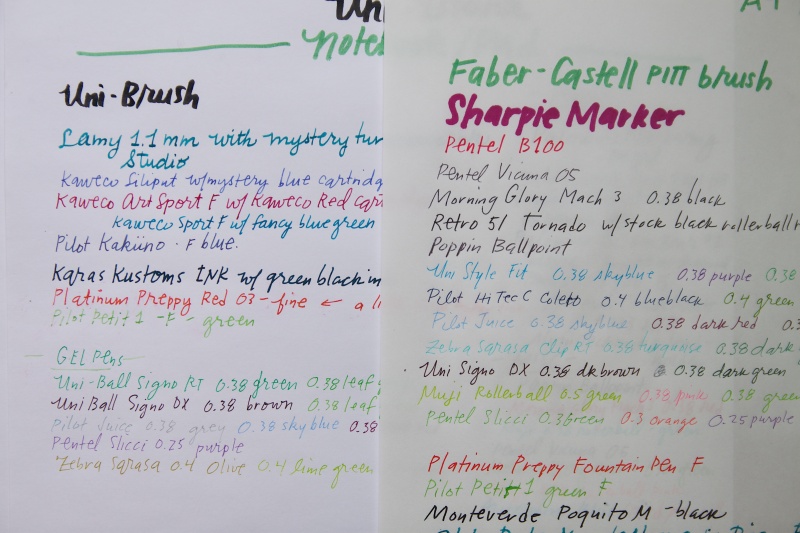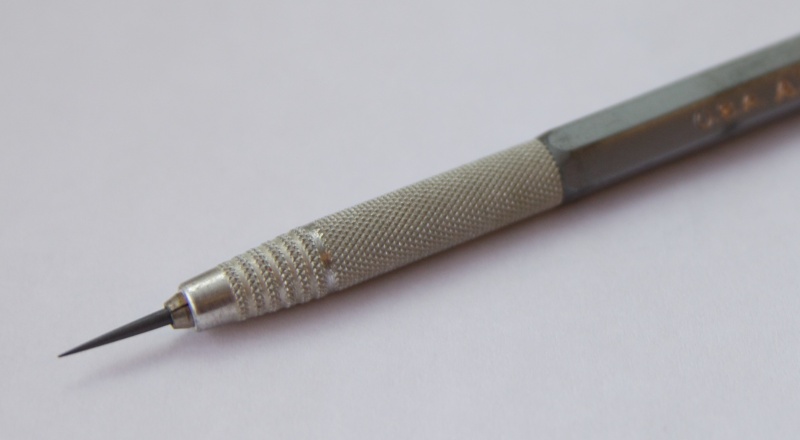
I realized I’d never really talked about what I like about vintage pencils, beyond the obvious that they look cool and are old and are often relics of domestic factories of companies still in business. So I thought I’d take a moment to show you some vintage pencils in action.

One of the great things about vintage pencils is that, no matter how old they are, they are going to write if you sharpen them. If it has an eraser, avoid it completely though. The erasers will dry out in a matter of a year or two so trust me when I tell you that a 40 year old eraser will either do nothing at all or leave a dark smudge on your paper. So don’t bother with it. But the lead? Its all good.

Some pencils will have unusual grading as opposed to the modern B (for black or soft leads) and H (for hard and therefore lighter leads). Some vintage pencils may simply say HARD or VERY HARD like the ones shown above or a combination of text.
In the past, pencils were used for lots of purposes beyond just Scantronic tests and math homework. Remember, the pencil had its heyday in the world before computers and the power of the undo.
I have a few “film lead” pencils that were designed to write on plastic film for printing or photography. Hard lead pencils were favored by draftsmen and artists and soft leads could be used to write on wood. Pencils allowed folks to apply pressure to their writing in order to easily and cheaply use carbon copies like a store receipt or invoice.
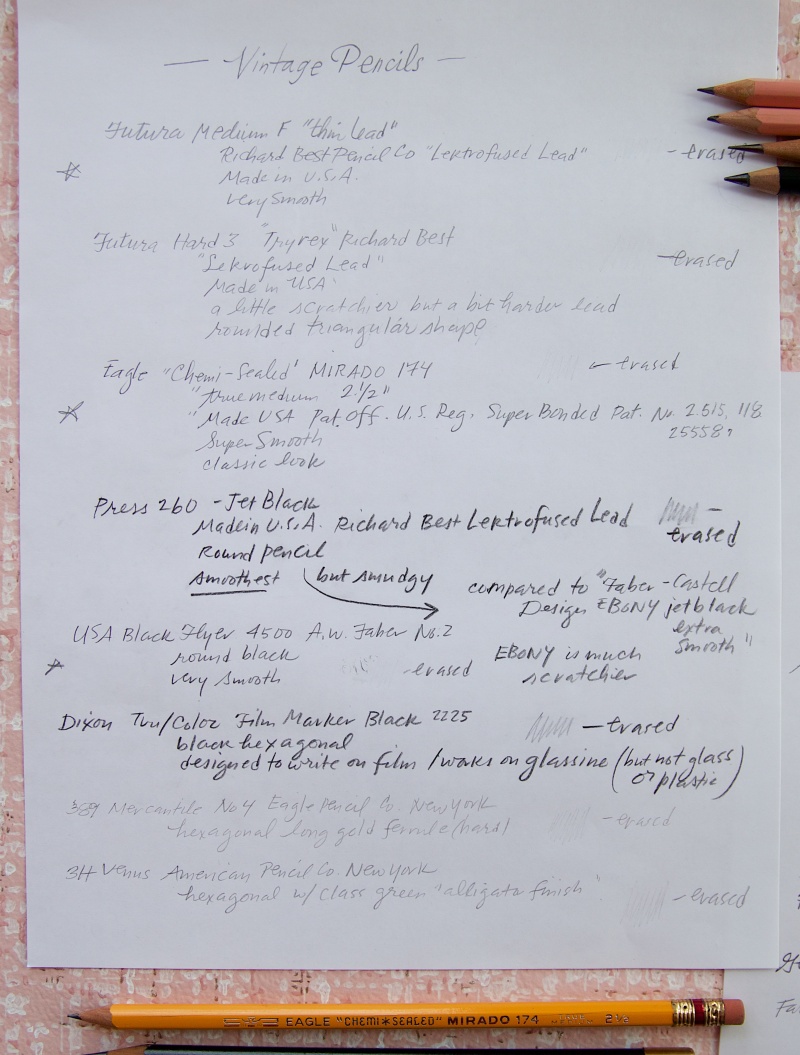
This is a writing sample of several of my vintage pencils. There were three stand-outs in writing quality: the Futura Medium F, the Eagle Chemi*Sealed Mirado 174 and the USA Black Flyer 4500. I was stunned at how smoothly they wrote.
I also loved writing with the Press 260 Jet Black. It reminded me of the Faber-Castell Design Ebony pencil and the General’s Layout Extra Black but when I compared them, The Press 260 was light years darker and smoother. If you like either of those modern pencils, its worth it to seek out the Press 260 Jet Black.

On the second page, I wanted to also include some modern pencils so you could have a point of reference for how dark or light the writing is.
I would say that the USA Black Flyer is comparable to the Blackwing 602 but the Flyer is a smooth round barrel while the Blackwing is a hexagonal. The Flyer is unfinished on the end. Potentially, you could sharpen it from both ends or add an eraser cap were you to find one of these at a yard sale. The Faber-Castell Grip 2001 has a similar feel, graphite-wise, to the vintage Mirado but the barrel shapes are different, not to mention the overall appearance.
I love modern and vintage pencils with equal enthusiasm. Would I give up my stash of modern Blackwing 602s for another vintage Mirado? No way. I like having the chance to sample old pencils like rare, fine wines. I enjoy them while I can and save the little, stumpy ends like corks. And modern pencils provide me with a steady stream of writing enjoyment.
Writing sample was done on Rhodia blank pad and all erasing was done with a Staedtler Mars Plastic eraser.


